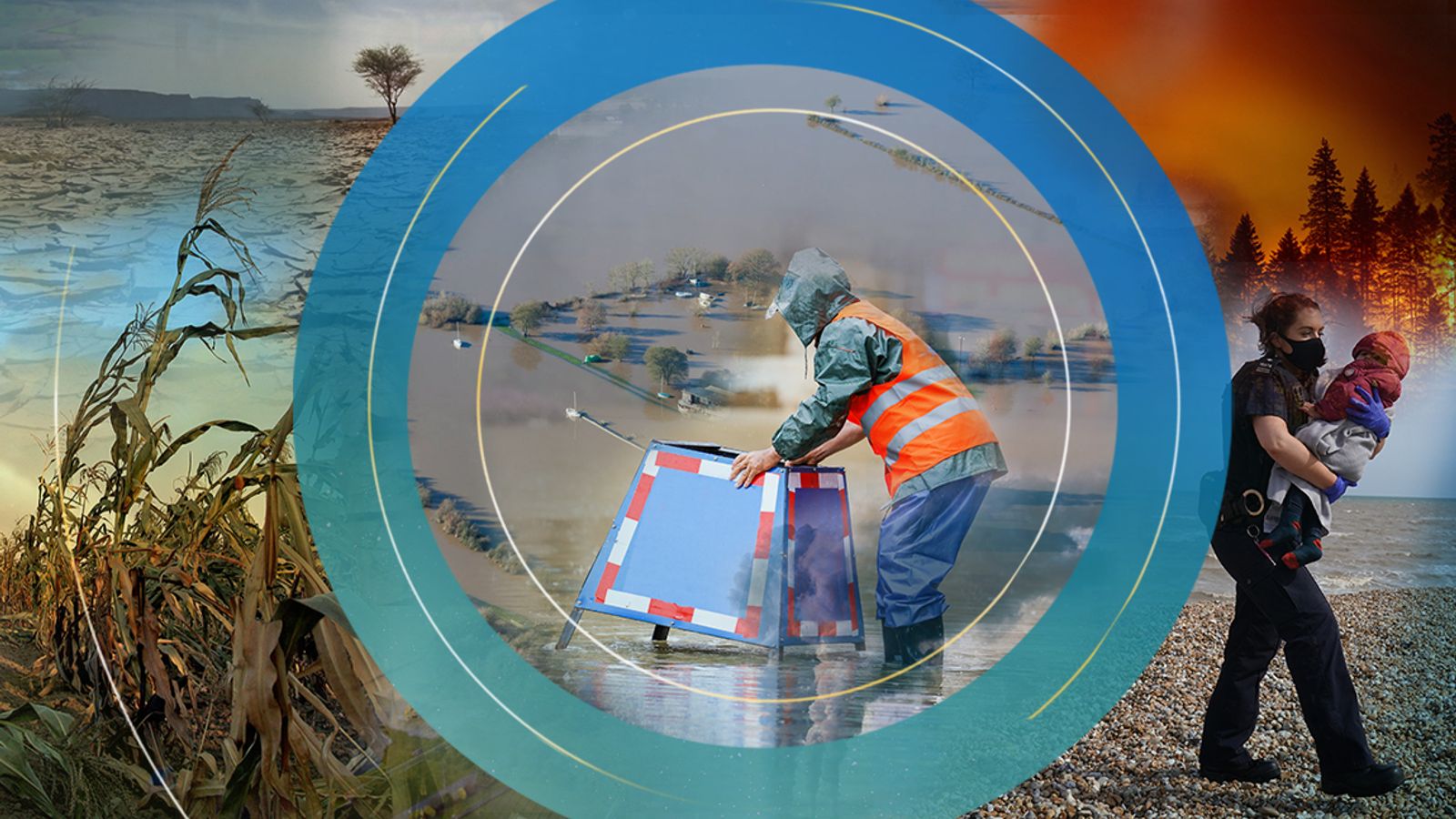Extreme weather drove people from their homes more than 22 millions times in 2021, according to new analysis.
This brought the total number of internally displaced people (IDPs) to a record high of 59.1 million.
The “unprecedented” number of IDPs was up from 55 million the year before, and also driven by fresh violence and drawn-out conflict in countries including Ethiopia, Afghanistan and Syria, the Internal Displacement Monitoring Centre (IDMC) said in its yearly review.
“The situation today is phenomenally worse than even our record figure suggests, as it doesn’t include nearly eight million people forced to flee the war in Ukraine,” said Jan Egeland, secretary general of the Norwegian Refugee Council, which set up the IDMC.
He called for a “titanic shift in thinking from world leaders” on how to end “this soaring human suffering”.
People were forced to flee their homes around 38 million times in 2021, bringing the total number of internally displaced people to 59.1 million, as many uprooted in previous years still hadn’t returned home.
The majority (22.3 million) of the new displacements were driven by weather-related disasters, including cyclones, floods, wildfires, drought, landslides and extreme temperatures.
Pollution still killing millions and accounts for one in six deaths worldwide, study finds
‘How much more evidence do we need’? Planet breaks four climate records in one year, WMO warns
Greenpeace activists scale Thames jetty to block oil tanker from docking
Last year flooding in China triggered 1.4 million internal displacements, Hurricane Ida sparked thousands of evacuations in Cuba an the United States, and cyclone Yaas uprooted people in India and Bangladesh in areas already battered by cyclone Amphan the year before.
The impact of climate change on weather is complex and varied, but generally the crisis is making heat waves worse, fuelling the conditions for wildfires and super-charging hurricanes and rainfall.
“Yet weather does not need to mean disasters,” said Ilan Kelman, professor of disasters and health at University College London.
What makes a hazard like a flood become a disaster depends on how vulnerable or marginalised people are, where and how they live or access to infrastructure like early warning systems.
“Human-caused climate change, in general, does not cause disasters and does not force displacement,” Prof Kelman told Sky News.
Please use Chrome browser for a more accessible video player
For example, deaths from drought are more due to lacking access to water or alternative livelihoods or planned migration, irrespective of the drought’s cause, he said.
The exception is heat-humidity, which climate change change is driving “into realms beyond our experience and our ability to survive,” Prof Kelman explained.
“It was terrifyingly lethal in British Columbia last year and in India and Pakistan this year… There is little we can do, except stop the climate change we are causing,” he urged.
IDMC director Alexandra Bilak told Sky News: “Displacement is not only a result of environmental change.
“Human-driven factors, such as unsustainable land-use practices, the destruction of ecosystems and large-scale development projects, play a role too,” she said.
“Climate change can be seen as both a slow and a fast moving crisis,” said Dr. Lisa Schipper from Oxford University’s Environmental Change Institute.
The gradual shift in seasons, rainfall, temperatures create uncertainty and vulnerability, so when extreme events happen, people are less able to cope, making displacement one of the only remaining options, she said.
Watch the Daily Climate Show at 8.30pm Monday to Friday on Sky News, the Sky News website and app, on YouTube and Twitter.
The show investigates how global warming is changing our landscape and highlights solutions to the crisis.






















